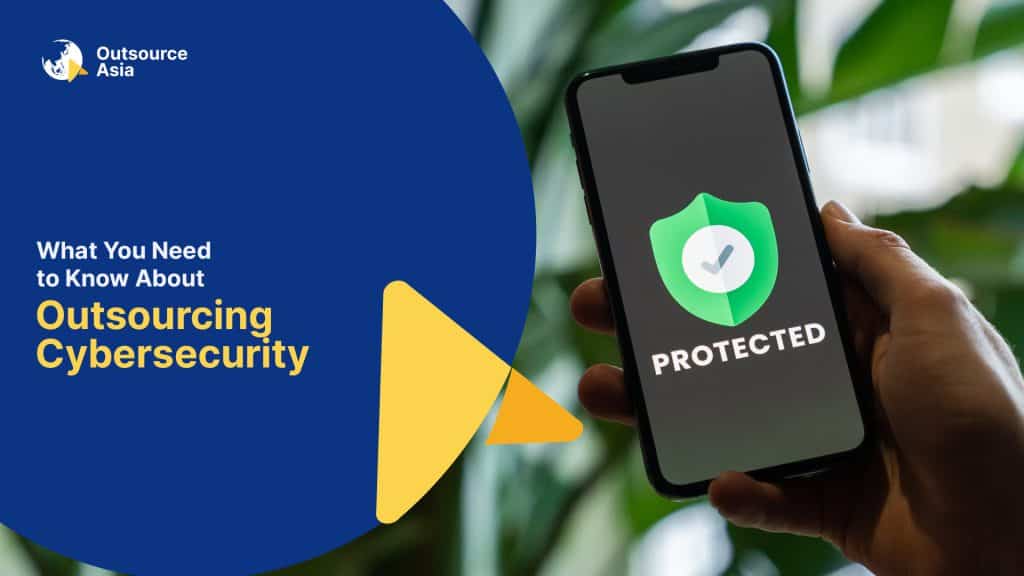
What You Need to Know About Outsourcing Cybersecurity
The General Data Protection Regulation (GDPR) of the European Union (EU) was heralded as the most significant shift in data privacy rules in the last 20 years when it first went into effect. GDPR has lived up to its name. Many other governments throughout the world have now followed suit.
There are currently comprehensive data protection and data privacy legislation in more than 130 nations and territories. California, Virginia, and Colorado, for example, have legislation to secure residents’ personal data and protect their data privacy rights. These laws are in addition to all of the other cybersecurity-related legislation and standards that have been produced by business groups, regulatory agencies, and other organizations.
Cybersecurity Defined
Cybersecurity refers to the safeguarding of internet-connected systems, including hardware, software, and data, from cyber threats. Individuals and businesses utilize the method to prevent illegal access to data centers and other digital systems.
A robust cybersecurity strategy can give a good security posture against hostile attacks aimed at gaining access to, altering, deleting, destroying, or extorting critical data from an organization’s or user’s systems. Cybersecurity is also important in preventing attacks that try to disable or impair the operation of a system or device.
Different Types Of Cybersecurity Threats
It’s a difficult endeavor to stay up with new technology, security trends, and threat intelligence. It’s required to safeguard data and other assets against cyberthreats, which can take numerous forms. The following are examples of cyberthreats:
1. Malware is a type of software that can be used to harm a computer user by using any file or program. Worms, viruses, Trojan horses, and malware are examples of this.
2. Ransomware is another type of malware that involves an attacker encrypting and locking the victim’s computer system files and demanding payment to decrypt and unlock them.
3. Social engineering is a type of attack that uses human interaction to persuade users to break security processes in order to obtain sensitive data that is normally protected.
4. Phishing is a type of social engineering in which a person sends a fake email or text message that looks like it came from a trustworthy or well-known source. The goal of these communications, which are frequently random, is to collect sensitive data, such as credit card or login information.
5. Spear phishing is a sort of phishing assault that targets a specific user, company, or organization.
6. Security breaches or losses caused by humans, like employees, contractors, or consumers, are known as insider threats. Insider dangers can be either malicious or careless.
7. Multiple systems disrupt the traffic of a targeted system, such as a server, website, or other network resource, in a distributed denial-of-service (DDoS) assault. Attackers can slow or damage the target system by flooding it with messages, connection requests, or packets, preventing genuine traffic from accessing it.
8. Advanced persistent threats (APTs) are long-term targeted attacks in which an attacker infiltrates a network and goes unnoticed for a long time in order to steal data.
9. Eavesdropping attacks involving a man-in-the-middle (MitM) attacker intercepting and relaying messages between two parties who believe they are speaking with one other are known as man-in-the-middle (MitM) attacks.
Top Cybersecurity Challenges
Hackers, data loss, privacy, risk management, and changing cybersecurity methods are all constant threats to cybersecurity. The number of cyberattacks is unlikely to reduce very soon. Furthermore, additional attack access points, such as the internet of things (IoT), raise the need to secure networks and devices.
The ever-changing nature of security vulnerabilities is one of the most difficult aspects of cybersecurity. New attack channels emerge as new technologies emerge and as technology is exploited in new or different ways. It can be difficult to keep up with the constant changes and advancements in assaults, as well as to update practices to protect against them. Among the issues is ensuring that all aspects of cybersecurity are kept up to date in order to protect against potential vulnerabilities. Smaller businesses without staff or in-house resources may find this particularly tough.
Furthermore, organizations can collect a wealth of information about individuals who utilize one or more of their services. The likelihood of a cybercriminal attempting to steal personally identifiable information (PII) increases as more data is collected. An organization that saves PII on the cloud, for example, could be the target of a ransomware assault. Organizations should do all possible to avoid a cloud compromise.
Employees may bring malware into the office on their laptops or mobile devices, thus cybersecurity strategies should include end-user education. Employees who receive regular security awareness training will be better able to contribute to keeping their firm safe from cyber threats.
Another issue with cybersecurity is a scarcity of competent cybersecurity professionals. As businesses acquire and use more data, the demand for cybersecurity professionals to assess, manage, and respond to problems grows. The workplace gap between needed cybersecurity jobs and security specialists, according to (ISC)2, is expected to be 3.1 million.
When outsourcing cybersecurity management, discuss with your outsourcing partner your regulatory responsibilities to ascertain the precise requirements that apply to your business. These are highly contingent upon the type of data you handle, your industry, your regulatory body, and the geographic confines in which you operate.
If you have questions about cybersecurity management or are looking for tips on finding the right outsourced service providers to manage your organization’s cybersecurity, Outsource Asia can help. Schedule a FREE CONSULTATION today.


